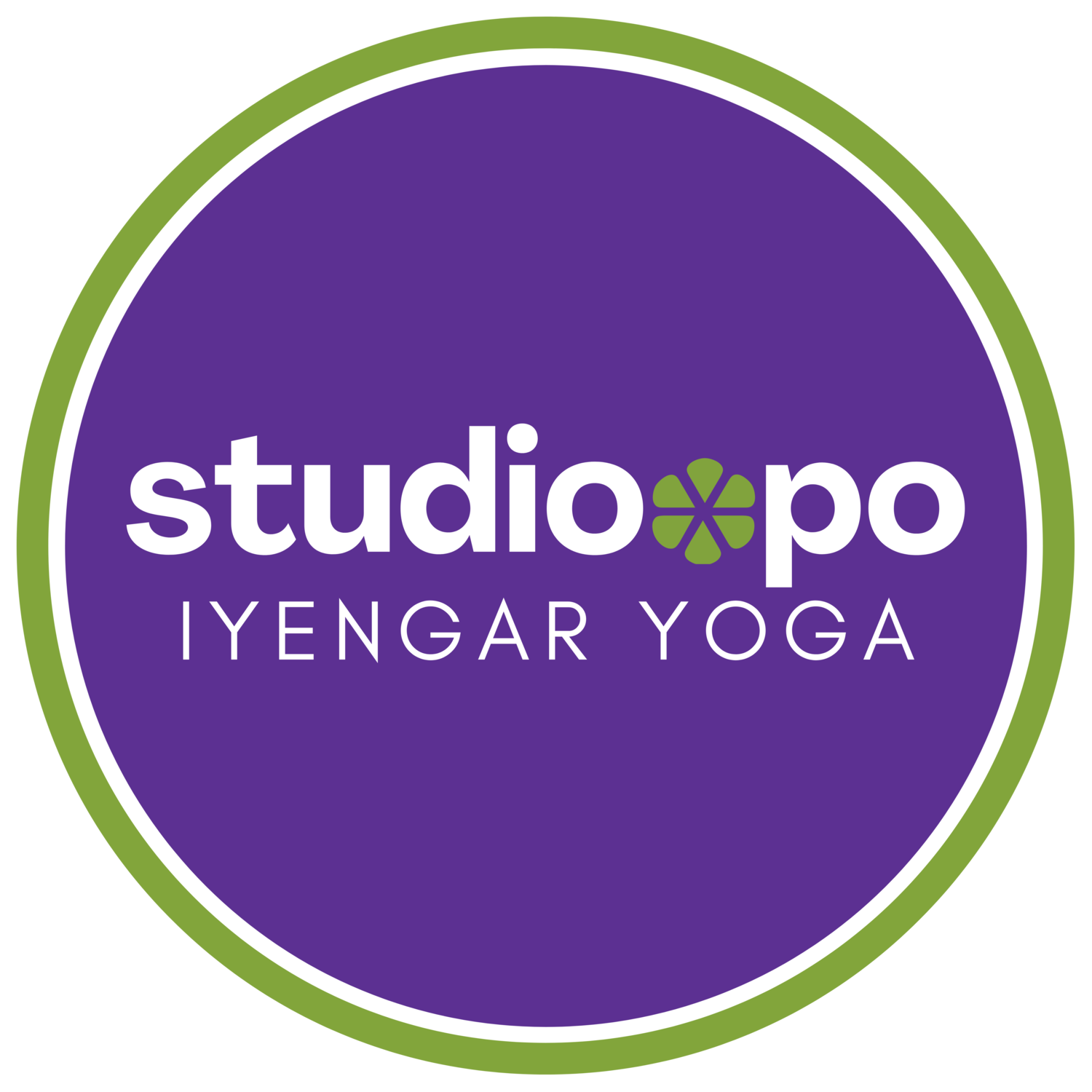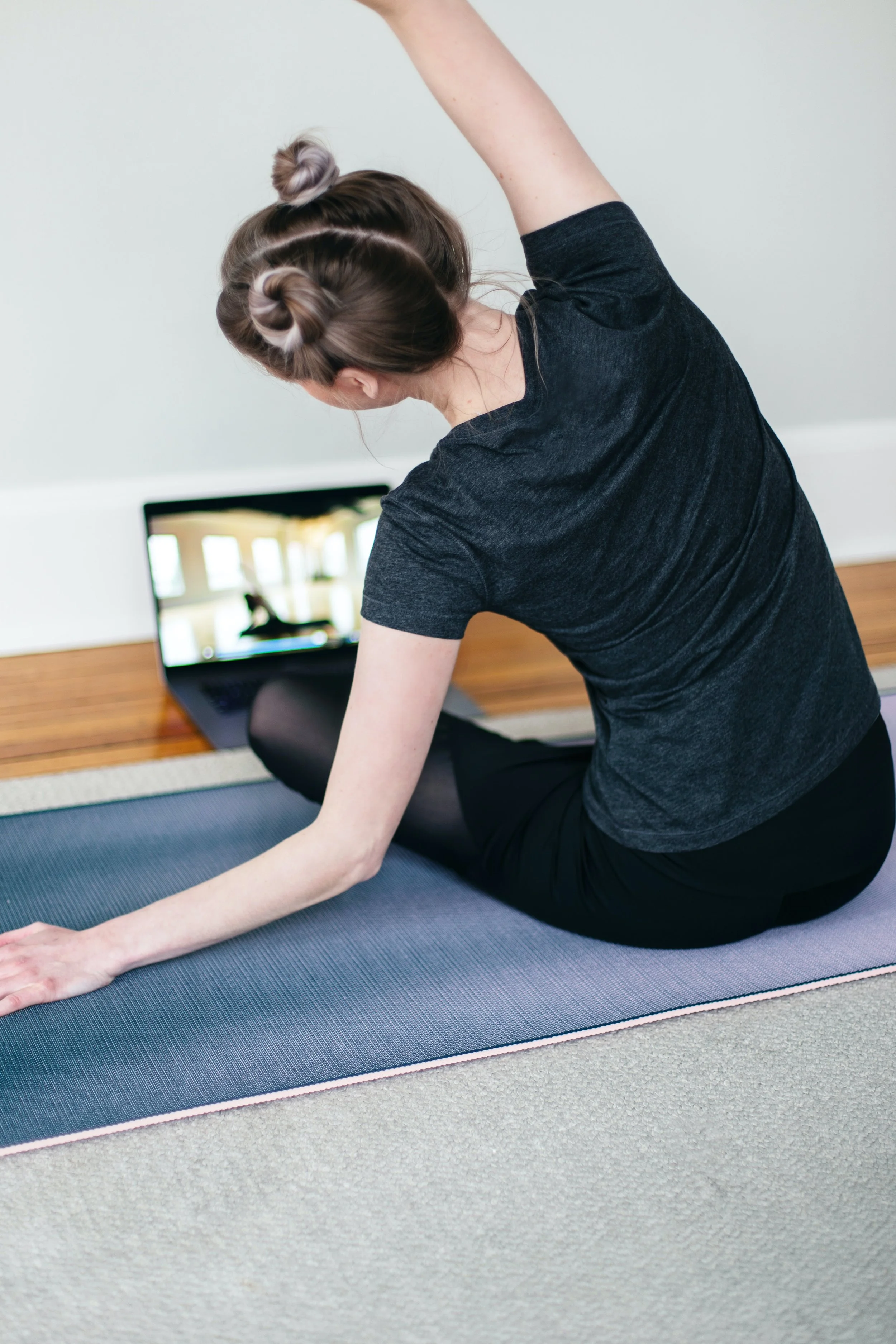Essential Guide to Iyengar Yoga Online - Part I
All Online Yoga is NOT the Same
In this post, I describe the 3 most popular ways to practice yoga online and also share practical advice for figuring out which approach (or combination) is best for YOU.
For anyone just getting started with an online Iyengar Yoga practice, you will find a ton of practical info below.
xo, /stephanie.
P.S. Are you new to Iyengar Yoga and looking for classes? Check out my online course, Iyengar Yoga Fundamentals
3 Types of Online Yoga Classes
Whether it's yoga in the Iyengar method or another style of yoga, there are 3 main types of online classes:
Interactive Livestream
Webcast
On-Demand
1. Interactive Livestream
This is a class that happens online using video conferencing software such as Zoom. Just like an in-studio class, it happens in real time with a live teacher. It begins at a specific time and students who have registered are emailed a unique zoom link that gives them access to the class. Once students arrive in the online classroom, the teacher can see them and the students can see the teacher. Students can also see the other students. Although teachers may put different protocols in place, in an interactive livestream, students are generally able to communicate with the teacher via chat and/or by unmuting themselves to speak aloud. Students also have the option to turn their video off if they prefer not to be seen by the teacher.
Many students enjoy the customization that occurs in a livestream class. Because the teacher can see the students, the teaching can be tailored to respond to the specific needs of the students. Many students also find that when the teacher is watching, it helps keep them focussed and accountable.
2. Webcast
This type of class is similar to a livestream. It happens in real time with a live teacher and students join the class by registering in advance and receiving a unique zoom link. However, in a webcast, although the teacher will know whether you are in attendance, they won’t be able to see you. You are participating live but only the teacher can be seen. In some webcasts, there will also be an option to send the teacher a chat message.
One of the advantages of a webcast format is that you can benefit from the built in accountability of a live class but without needing to arrange your space/camera with the teacher's view in mind. If you are practicing in a confined space where this is challenging, cumbersome, or perhaps feels invasive, the webcast format can be attractive.
The webcast format is also appealing to students who modify their practice due to to personal circumstances but who prefer not to attract special attention from the teacher.
Both webcasts and interactive livestream classes are frequently recorded and depending on the class protocols, students may access the recording for a predefined set of time. This is handy in case you are unable to attend or if you’d like to repeat the practice for further study.
3. On Demand
The 3rd type of online class is on-demand, which consists of pre-recorded content that yoga students can access whenever they wish to practice. There is no direct communication with the teacher during the class but many on-demand platforms incorporate opportunities for students to post comments, ask questions, and tag specific teachers so that they will respond at a later time. These digital features are helpful for infusing personal interaction into the on-demand yoga experience.
On-demand classes can be attractive because you are not bound by a set class schedule. Whenever you feel like practicing, there is always a class available. Another advantage is that many on-demand libraries are searchable and give yoga practitioners the opportunity to choose a class based on their personal needs. For example, if you are keen to loosen up your hips you might search for ‘hips’ and choose a class from the results. Similarly, you could search for a category of poses, such as 'standing poses', or explore classes geared to a certain level of practice, i.e. for more advanced students or for new students.
Props such as bricks, bolsters, straps and chairs, are often utilized in Iyengar Yoga classes. In fact, BKS Iyengar was a pioneer in utilizing these props and ensuring that the practice is equally accessible to students of varied shapes, ages, and abilities. Filtering an on-demand library based on props can be handy because some classes will inevitably be more prop-intensive than others, and this way, you can always show up confidently prepared.
Online Iyengar Yoga classes for beginners
which format is best?
Okay, now that I’ve described 3 types of online classes, you may be wondering which one is best, and specifically which is best for new students? Well, there are 3 things that need to be factored into this decision:
Studying with qualified Iyengar Yoga teachers whom you respect is hugely important. Ultimately, you want to practice with a certified Iyengar Yoga teacher who is knowledgeable and kind, and who can motivate, encourage, and inspire you. In my experience, studying with a teacher whom you connect with and trust will have a much greater impact on the quality of your yoga experience than whether the class is live-online (livestream or webcast), on-demand, or even in-studio.
Humans are varied and so are the ways in which we learn. Some students may lack motivation and place a lot of value on the accountability that is built into live (online or in-studio) classes. Others may place high value on the anonymity of practicing on their own, at their own pace. Neither one of these is better or worse, they are simply different and each learning environment has unique strengths. I’ve personally found myself on both ends of this spectrum at different times. Sometimes wanting the live interaction and other times wanting the anonymity and autonomy that come from practicing on my own. It’s really quite special because in the yoga world, we have options. We can choose the learning environment that best suits our needs AND we can respect when and how those needs change! This only encourages a more consistent practice and personalized yoga experience.
If you want to LEARN Iyengar Yoga, you must DO Iyengar Yoga. This one may be obvious but it’s still really important. Some yoga is obviously better than no yoga. So, once you’ve picked a yoga studio and identified a certified Iyengar teacher that you'd like to study with, look at the class schedule to see what options are available. From that perspective, it’s quite simple. If your teacher offers online Iyengar Yoga classes that are on-demand, give them a try. If they offer online Iyengar Yoga classes that are livestream, then try those. And if they offer both, then guess what - you should try both! Whatever you choose, my best advice to you is to prioritize the quality of instruction, not the medium by which it’s delivered.
So to recap, the 3 things you need to consider when choosing a class in the Iyengar method are:
The skill, expertise, & relatability of the Iyengar teacher.
The class format which is most conducive to your personal style of learning and which will best support you as a yoga practitioner.
The type of classes offered by your teacher. Quality of instruction will always have a greater impact over the medium by which it’s delivered.
In Part II of this Essential Guide, we'll take this discussion even further and I'll share with you the benefits of establishing a meaningful relationship with an Iyengar teacher and give you tips for making that happen, even in the online yoga world.
Stay tuned!

